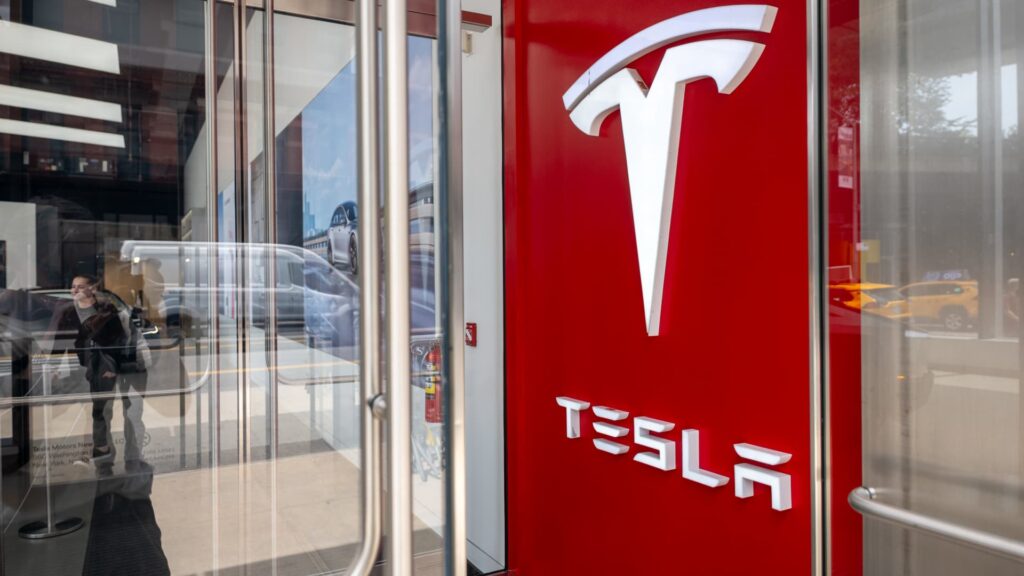As Tesla prepares to release its second-quarter delivery figures this Wednesday, Wall Street’s expectations remain subdued. Analysts have tempered their forecasts, anticipating that the challenges which have recently caused Tesla to miss delivery estimates persist. According to FactSet, the consensus forecast is for Tesla to report 387,000 vehicle deliveries this quarter.
The skepticism surrounding Tesla’s performance is not new. The electric vehicle giant has faced several quarters of sales pressure, largely due to public backlash against CEO Elon Musk’s political affiliations and partial factory shutdowns. Meanwhile, Tesla’s stock has suffered amid growing competition, particularly from Chinese automakers like BYD, Li Auto, Nio, and Geely.
Market Reactions and Political Tensions
In a recent development, Tesla shares fell by as much as 7.7% in early trading on Tuesday. This decline followed a late-night social media post by former President Donald Trump, suggesting that the U.S. Department of Government Efficiency should scrutinize subsidies provided to Musk’s companies. This rekindled a longstanding feud between Musk and Trump, especially after Musk criticized the president’s tax-and-spending bill.
Despite these headwinds, analysts have identified a potential bright spot for Tesla: its recent focus on Full Self Driving technology, highlighted by the launch of its Robotaxi services in Austin, Texas. Following this debut, Benchmark Equity Research raised its 12-month price target for Tesla to $475 per share, a significant increase from Tesla’s closing price on Monday.
Analyst Perspectives: A Mixed Bag
Deutsche Bank
Deutsche Bank anticipates that Tesla’s second-quarter deliveries will fall short of sell-side consensus expectations, though they note that buy-side expectations are already lower. They estimate 355,000 deliveries, down from a prior estimate of 385,000, and below the consensus of over 380,000. This represents a nearly 20% year-over-year decline, though a sequential increase of more than 5%.
“By geography, the largest declines could once again be coming from Europe where we believe the brand has been damaged the most and competition is intensifying,” Deutsche Bank analysts noted.
William Blair
William Blair’s analysis suggests that Tesla’s valuation increasingly hinges on its robotaxi business. With the Austin launch, Tesla is transitioning from an automaker to a leader in AI and autonomous driving, tapping into a new trillion-dollar market. They have reduced their delivery estimates to about 355,000, compared to the consensus of around 385,000.
“Despite some crosswinds, we believe the launch of robotaxi keeps momentum at Tesla’s back and we remain at Outperform,” analysts at William Blair stated.
Barclays
Barclays highlights ongoing challenges with volume and margin forecasts, noting that EPS revisions are down approximately 40% over the past year. While Tesla’s strategic pivot toward autonomous driving and AI is becoming more apparent, they emphasize that the auto business remains the primary revenue driver in the coming years.
“The EV environment has fallen into a deep EV Winter, with EV growth ex-China far below expectations. Tesla has struggled globally, with volumes likely down two years in a row,” Barclays analysts commented.
Strategic Shifts and Future Outlook
Canaccord Genuity has lowered its second-quarter delivery estimates from approximately 432,500 to 360,000. They attribute this revision to the impact of Musk’s political associations, which they believe became more discernible in the second quarter. Tesla’s deliveries are reportedly tracking poorly across several regions, including Europe.
Meanwhile, Cantor Fitzgerald notes a significant personnel change that could impact Tesla’s operations. On June 26, Tesla announced the departure of Omead Afshar, an executive who played a crucial role in ramping up production at the Texas Gigafactory. This change comes amid rising competition and a consumer backlash against Musk’s political involvement.
JPMorgan’s analysis indicates that the softer demand for Tesla vehicles observed in the first quarter has continued into the second quarter. They expect a year-over-year decline in deliveries to accelerate, with deliveries falling from 444,000 a year ago to just 360,000, an 8% shortfall compared to Bloomberg’s consensus of 392,000.
“We see material risk to the outlook for full-year deliveries, given that consensus requires a sharp pivot from underperformance to outperformance of expected seasonal patterns,” JPMorgan analysts warned.
As Tesla navigates these challenges, the company’s strategic focus on autonomous driving and AI could be pivotal in shaping its future trajectory. The coming quarters will reveal whether these innovations can offset the pressures from competitive forces and political controversies.
